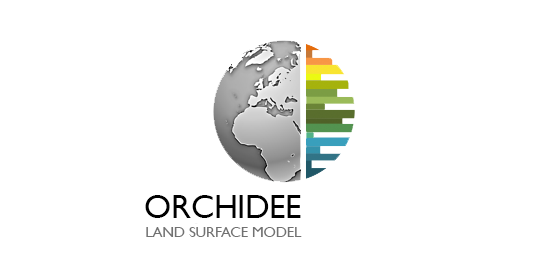| Version 16 (modified by jgipsl, 6 weeks ago) (diff) |
|---|
UPDATED ROUTINE SCHEME IN ORCHIDEE
Meeting of the 18 / 02 / 2019
Present: Agnes Ducharne, Yann Meudesoif, Jan Polcher, Thomas Dubos, Catherine Ottle, Pascal Maugis, Matt Macgrath, Korato Hamada, Philippe Peylin
Excused: Josefine Ghattas, Xudong Zhou
A/ "STANDARD" ROUTING. All the discussed developments rely on the principles developed by Jan Polcher and students since the 2000s, and still used in CMIP6:
- River routing performed by a cascade of linear reservoirs along the river basins (+ local reservoirs for fast and slow flow)
- Topography and drainage directions described at 0.5°
- Possibility to describe sub-units (or HTUs for Hydrological Transfer Units) if the model resolution is higher than 0.5°
- 3 kinds of destinations: lakes (endorheic basins), riverflow (concentrated at the outlet of large river basins), coastal flow (the rest of the non endorhiec rivers)
- Related processes : floodplains, ponds, irrigation, with feedback on soil moisture
- Papers and documents : HDR de Jan Polcher 2003 ; Ngo-Duc et al 2007; Thèse de Matthieu Guimberteau 2010; Training 2014 by M Guimberteau; Note d'Agnès Ducharne 2019
B/ "HIGH-RESOLUTION" ROUTING (Supermesh) TowardsParallelRouting.pdf: Presentation by Jan P. of a new routing scheme, focused on the description of the HTUs, owing to high resolution topograhical information (1km with HydroSHEDS to 90m with MERIT). This topographic information allows a precise definition of small hydrological basins. HTUs from the intersection of hydrological basins and ORCHIDEE grid cells, so that a HTU only belongs to a single grid cell. Further work is designed to lump small HTUs and prevent from dealing with too many of them. Finally each HTU is assigned a flow direction across the grid-cell borders.
- This enhanced version of the standard routing scheme has been developed over the last few years (PhD theses of Trung Nguyen and Xudong Zhou)
- Its parallelisation is not well implemented and requires work in order not to slow down ORCHIDEE too much.
- Paper by Nguyen-Quand et al 2018
C/ "SIMPLE" ROUTING routage orchidee.pdf: Presentation by Yann M. of the so-called "simple routing" scheme based on the current ORC routing scheme but somehow externalised: the runoff and drainage fluxes calculated on the ORCHIDEE grid are remapped on the 0.5° where topography and drainage directions are known, and routing is performed at this resolution, using the same equations as in the standard scheme.
- Flexible parallel implementation
- Return water flux (from floodplains or irrigation) not included, but should be possible with an interpolation to the ORCHIDEE grid.
D/ From the discussion 3 majors directions of work emerge:
- Define a common/optimal target for the routing scheme that the ORCHIDEE group would like to have. This could combine the advantages of both Yann and Jan approaches. For that a document should be written to summarize the two complementary approaches with their pros/cons, so we can more easily iterate on the best solution (independent grid or embedded in the ORC grid; implementation of floods, ponds, etc...)
- Improving the "simple" scheme of Yann M.: Y.M needs some help to run some tests with a given precipitation field (or directly with a runoff+drainage flux from an ORC run); This will allow to evaluate the potential of this simple external approach. (Agnes proposed to help).
- The simple and standard schemes are using a relatively old "basin description" (at 0.5°) while Jan now has access to a new basin description at 90m (from Dai Yamazaki, based on the MERIT DEM). Jan needs some help to work on this new hydrography database to extract the relevant information at a suitable resolution.
E/ Other issues
- The current ORCHIDEE routing scheme (used for CMIP6) should be corrected with respect to the transfer time of the water in the different reservoirs (bug that make this transfer time strongly dependent on the grid resolution). This point has already been identified in the standard version (see Agnès' note, pp 4-5), but not solved: both the simple scheme by its design, and the high resolution scheme (owing to enhance upscaling procedures) offer a tractable solution.
- Other models were developped for parallelisation in large river basins, see for instance David et al. 2011
Objectives for an optimal Routing Scheme
- ORCHIDEE needs to think for its future development if it wishes to keep the routing inside the LSM in order to optimise the description of the interactions of surface water and other processes or "externalise" the routing in order to simplify the model.
- How important is the lateral water transport to the land surface processes we wish to represent. The lateral water transport is the main cause of the complexity of the parallelisation of the routing. Thus the above discussion will also apply to groundwater fluxes as soon as they cross the grid cell boundary.
Attachments (6)
- TowardsParallelRouting.pdf (1.6 MB) - added by peylin 6 years ago.
- routage orchidee.pdf (799.9 KB) - added by ymipsl 6 years ago.
- routing_k_upscaling_etc.pdf (807.8 KB) - added by aducharne 6 years ago.
- David_et_al-2011-RAPID_NHDPlus.pdf (4.5 MB) - added by aducharne 6 years ago.
- ngo-duc_2007_grace.pdf (1.1 MB) - added by aducharne 6 years ago.
- Nguyen-Quang2018_HRrouting.pdf (6.3 MB) - added by aducharne 6 years ago.
